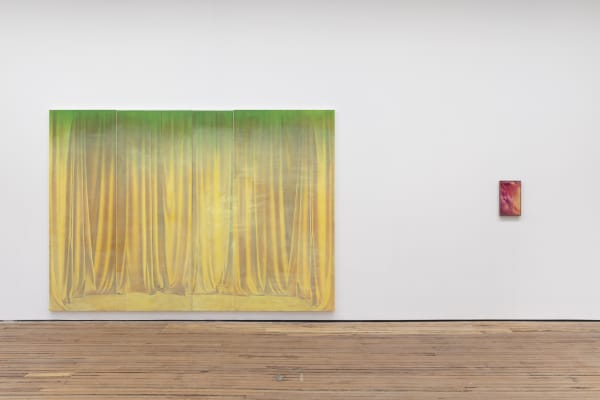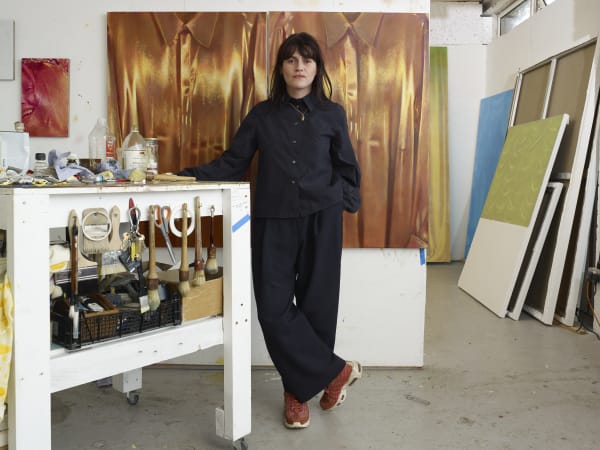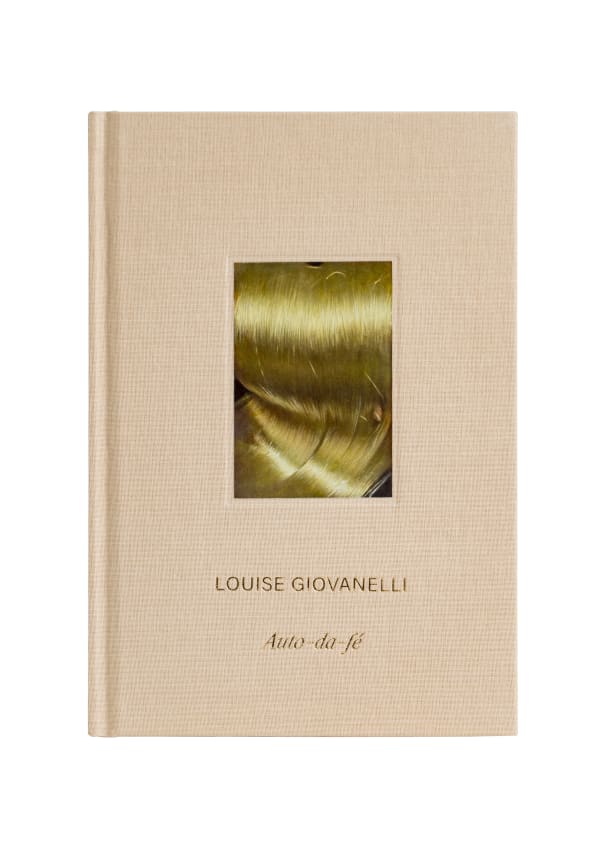Louise Giovanelli: Auto-da-fé
GRIMM is proud to present a solo exhibition of new paintings by Louise Giovanelli.
Louise Giovanelli’s (b. 1993 in London, UK) recent works depict the aesthetic of stage performances with various acts suspended. Giovanelli navigates different modes of picturing and approaches to painting, repositioning familiar imagery in her paintings by withholding or emphasizing details in combinations that require deep contemplation. Her paintings are as much about the subject matter they depict, as what is not shown but suggested within their borders.
Two large-scale diptychs portray sets of closed curtains on a stage, anchoring the exhibition. Theater curtains construct both space and atmosphere, simultaneously absorbing and radiating light to create moments where their material quality is intensified and abstracted. From this restricted perspective, the minutia of the stage appears to be performative itself, set at the periphery of an unnamed spectacle. In three paintings depicting a dancer, Giovanelli paints passages from performances that are cropped and magnified to harness the inner power they convey. The imagery Giovanelli uses for these paintings comes from American music videos and television series. Taking framed moments and duplicating them across her works, she blurs our understanding of cause and effect. Likewise, in the series Caryatid, an anonymous singer sustains an unheard note throughout four small-scale paintings. Her persona is given form through glossy lips, curved acrylic nails, and flecks of light from a disco ball shining outside the paintings.
Another large-scale diptych shows two shimmering gold blouses cropped tightly together in the frame, in such a way that the viewer can’t see who wears them, or if they are perhaps merely hanging side by side. Their fabric is reminiscent of the sparkling suits worn by gameshow hosts, or drapery from T.V. theater, in opposition to the dramatic heaviness of a theater curtain. The close-up perspective of these “figures” invades the viewers’ personal space and gives the work a menacing quality.
Throughout the exhibition intimately-scaled works function as faint glimmers of human presence just legible amongst the dominating abstract structures and enveloping folds of the other larger work.




















